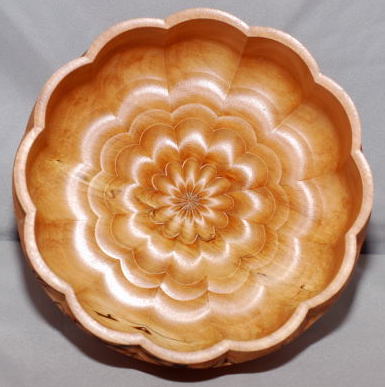Materials Used in Ornamental Turning - Pear
Ornamentally Turned Objects

Pear

Pear
Picture courtesy Sam Seaton
This is an excellent wood for ornamental turning, and gets used often. The wood is easily worked, and it holds shapes well. But it is the color, and the relative plain-ness of the wood which is why it is chosen for ornamental turning.
Prototyping
This wood is not highly available in large pieces without checks. Prototyping the design on more easily available woods is recommended.
Work Holding
(no notes at this time)
Ornamental Turning Notes
It has reasonable availability, and is not costly. It does have problems with cracking like with other fruit woods (though not as bad as some). Care needs to be taken in the drying if this is acquired whilst still wet.
Working the wood is easy, but requires some pre-planning. As with other fruit woods, the work will easily "burn", so you will need to decrease the contact time with the cutter. This can be achieved by slowing the cutter speed (i.e., slowing down the overhead drive), or by increasing the spindle drive speed (I typically run this 40-50% faster), or both. I have also found that a very sharp cutter will make a difference.
Finishing
Properly cut, no finishing should be needed. Most fruit woods leave a wonderful finish. If you do choose to add a finish, I recommend Tried & True’s Original Wood Finish.
Other Notes
More information is in The Wood Database.
|
Disclaimer: eMail comments to me at OTBookOfKnowledge @ Gmail.com. The process of woodturning involves the use of tools, machinery and materials which could cause injury or be a health hazard unless proper precautions are taken, including the wearing of appropriate protective equipment. |
